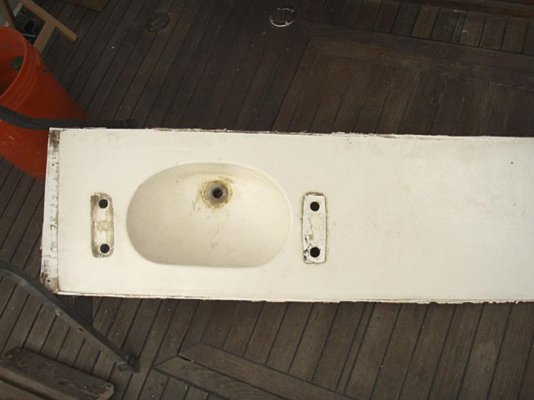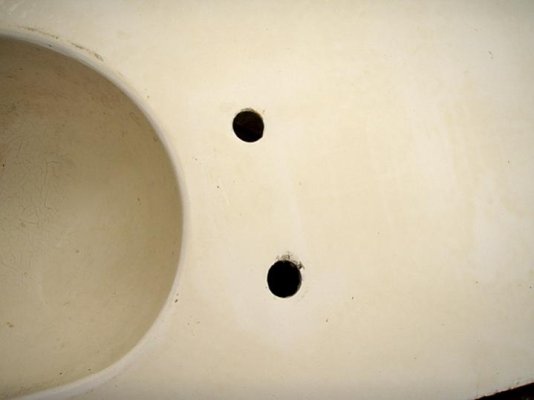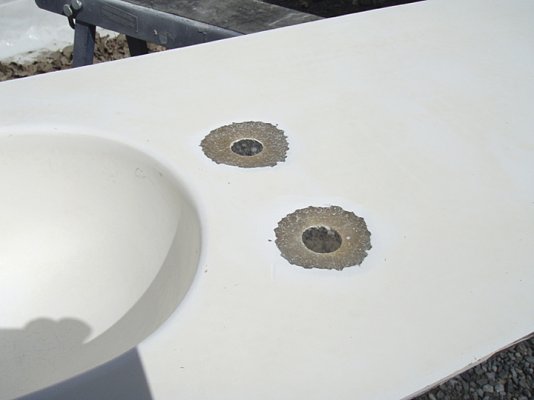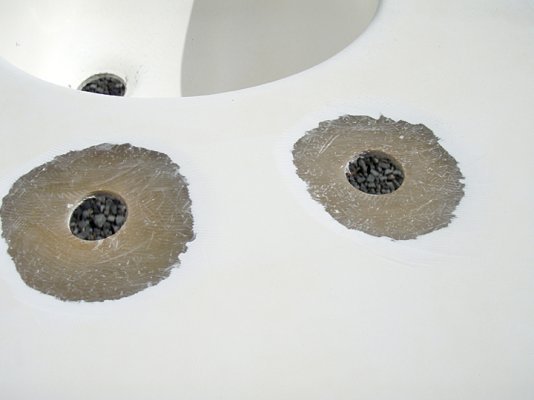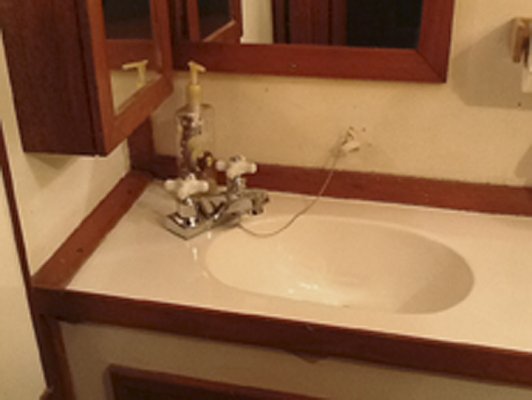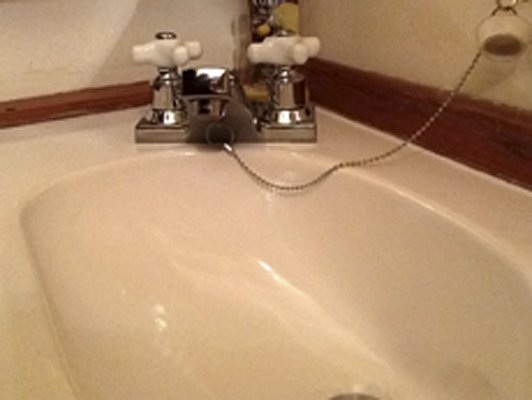I am just in the process finishing glassing in 3 unused thru hull transducer holes. I was my first hole patch, but not my first glass/epoxy experience. It was a time consuming but not hard process. My holes were about an 1 1/4 diameter thru an approximate 3/4' solid bottom. I followed the attached article pretty closely, with a couple of enhancements. Namely I put each of my round pieces of mat or cloth on a paper plate that had the diameter written on it. I sorted the smallest to the bottom of the stack for each hole, the largest, first layer applied was on top. I bought a nice but cheap ($18) digital scale, capable of 1 gram resolution from Harbor Freight. This proved to be the easiest method I have ever used for getting the ratios right on various size epoxy batches. I used clear plastic throw away cups for mixing. I put the resin and hardener in plastic bottles with ketchup type squirt caps. These let you add by the drop without waste or mess. About 6~7 drops = 1 gram. I would zero the scale with the cup on it. I would then add 3 to 7 grams of hardener, and then resin till the scale read 6 times the hardener wgt. Ex: 3g hardener = 18g total or 7g hardener = 42g total. This method is far more accurate than the WEST system pumps and allows you make a very small batch or a large one with the same accuracy. I presoaked the glass circles on their paper plates. I would do 5 or 6 at a time. I used slow hardener in approx 60 deg weather so I had time. I would stack the presoaked glass plates in order of application. Largest first. The best tool I found for saturating the glass and working out the air bubbles when applying the layers is a 2" chip brush with the bristles cut about a half inch long. The short bristles are stiffer and allow you tap out the air and move resin from place to place as you do it. I would pour the mixed epoxy on the patch circles like you would syrup on a pancake. I would then tap with the brush to get uniform saturation. The brush worked far better than the laminating roller. You are working upside down and air bubbles still want to go up. The short stiff brush did a better job of popping the bubles. For grinding the holes I used my 4 1/2 angle grinder with a 24 grit disk. It cuts fast. To control the very nasty dust I use an old forced air furnace squirrel cage blower. It creates a hurricane of wind. I place it so it about 4 ~5 feet from where I am working. It blows away the dust before it can land on you. Working with safety glasses in a short sleeve T=shirt I never got a bit of the itchys. Prior to ginding the conical holes, I groung off the bottom paint in about a 15 inch circle around the hole. Then use a template to draw accurate concentric circles every inch of diameter or so up to the final hole diameter (7.5" in my case) These help in getting the hole round and and the taper straight. I ended up with about 22 layers in each hole. My mat and cloth was pretty thin. One more thing, It is counterintuitive at least to me that the layers of glass run from largest to smallest. That is the right way though. It has to do with how the layers rest on each other rather than extend beyond the edge of layer below. This provides a stronger bond than having epoxy resin bridge the gaps.





